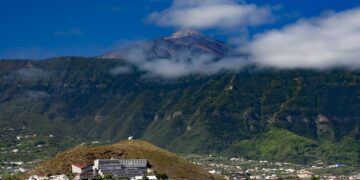The council upgrades half of the island’s road network
President Rosa Dávila states that on over 400 kilometres “we enhance safety, reduce accidents and improve mobility in Tenerife”
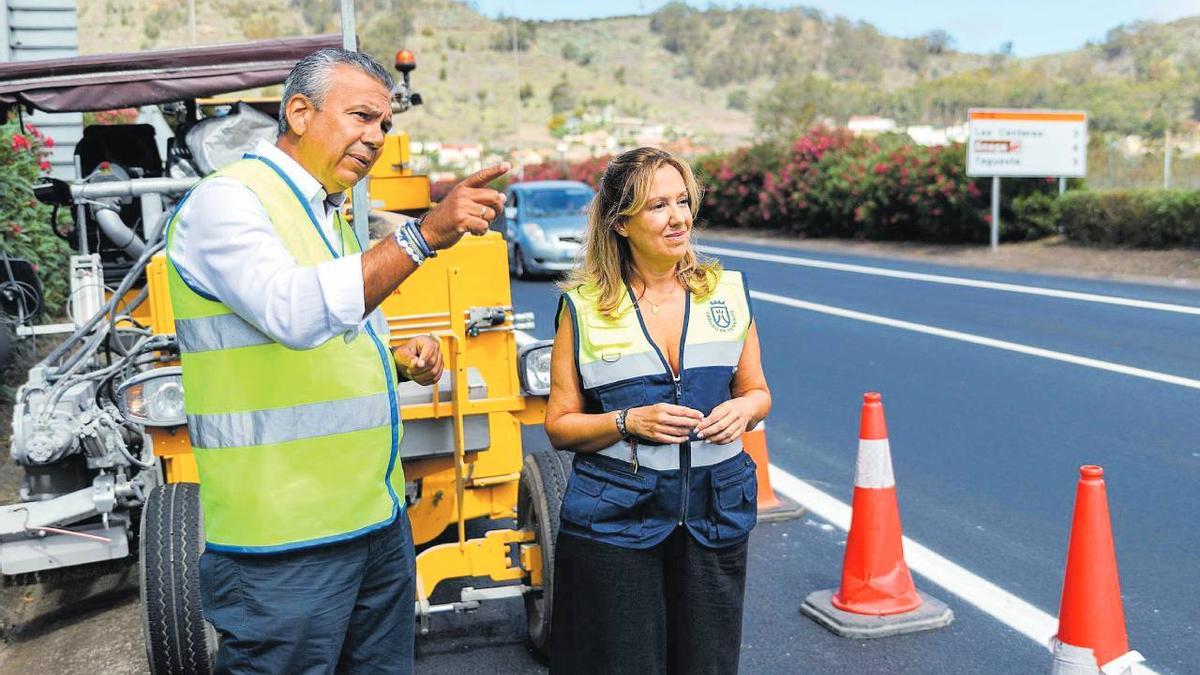
Rosa Dávila and Dámaso Arteaga examine improvement works on Tenerife roads. / The day
Renata Domingo
Santa Cruz de Tenerife 08 Feb 2025 0:01
Tenerife boasts a road network of roughly 1,500 kilometres, with 826 kilometres managed by the Cabildo de Tenerife, which is implementing an urgent plan for the upgrading and enhancement of the island’s road infrastructure, allocating over 300 million euros in 2024. This unprecedented investment has enabled the rehabilitation of 400 kilometres of roads, accounting for almost 50% of the road network overseen by the road department led by Councillor Dámaso Arteaga.
According to Cabildo President Rosa Dávila, “Upgrading our roads is a key priority to ensure safety and facilitate mobility in Tenerife.” She adds that “these works are not merely an investment in infrastructure, but also in the quality of life of our citizens. Maintaining roads in optimal condition lowers accident rates, enhances traffic flow, and makes routes more comfortable and efficient.”
Modernisation, a priority
Among the most significant ongoing projects is the TF-1 motorway, linking Arico, Fasnia and Güímar, with an investment of 30 million euros, alongside the development of the large pedestrian ring of Father Anchieta in La Laguna, budgeted at 10 million euros, aiming to improve pedestrian mobility at one of the most congested points on the TF-5. Additionally, 7 million euros have been earmarked for enhancements on TF-13 in the quarries, and 3.2 million euros for the refurbishment of the section between Tejina and Bajamar.
The Cabildo’s efforts to advance the works on the Erjos tunnel are also noteworthy. With an investment of 263 million euros, this tunnel will become the longest in the Canary Islands, facilitating the closure of the island ring and transforming connectivity between the northern and southern parts of Tenerife.
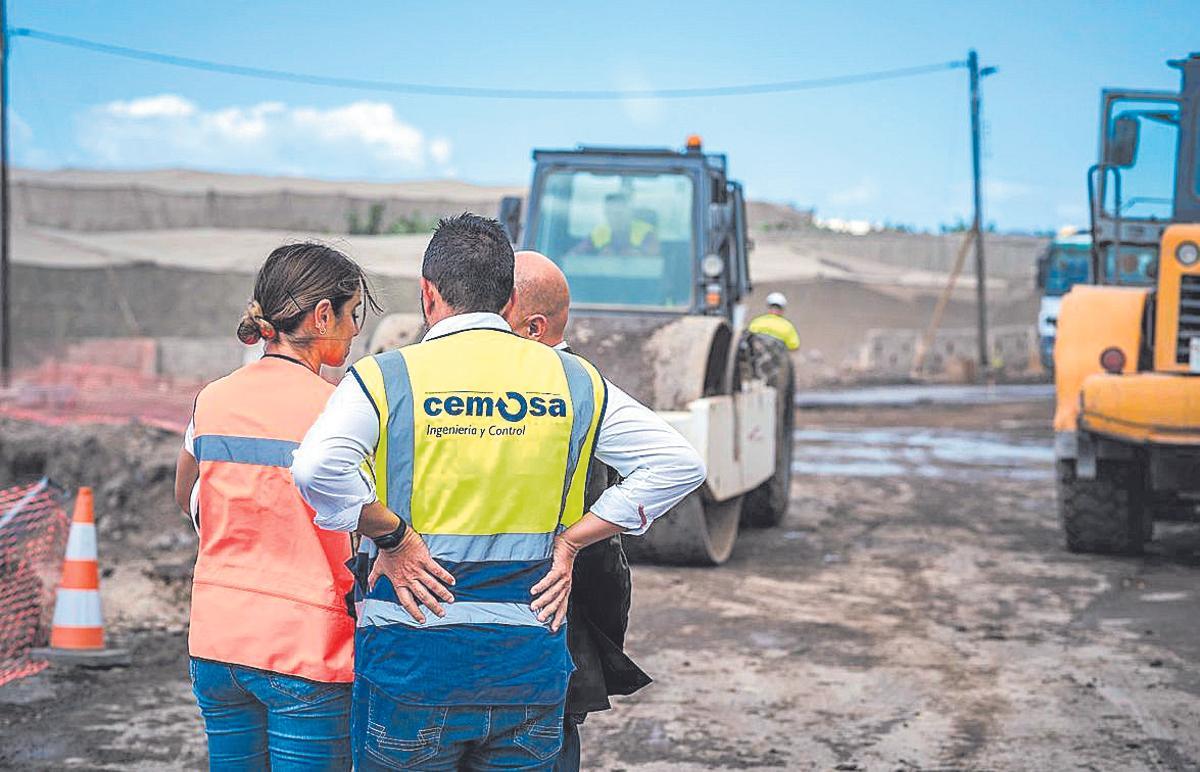
Improvement works on a Tenerife road. / The day
Insular Road Councillor, Dámaso Arteaga, underscores that “the state of the island’s roads is a top priority for this government team. We cannot permit the deterioration of the surface and inadequate maintenance to jeopardise drivers’ safety.” He further states that “these routes are crucial for the mobility of both Tenerife residents and visitors, generating over 3 million daily trips with a vehicle fleet of around 900,000 cars.”
San Cristóbal de la Laguna receives focused attention in this road enhancement programme, with an investment of 24 million euros. The rehabilitation of the TF-12 road at Cruz del Carmen, costing 3.7 million euros, optimises the surface, drainage, and signage in a principal access route to Anaga Rural Park. This initiative not only enhances driver safety but also benefits hikers and tourists in the area.
An additional 7 million euros are allocated for improving traffic flow at TF-13 as it traverses the quarries, while 3.2 million euros are dedicated to the refurbishment of the section between Tejina and Bajamar, aiding thousands of drivers and reducing waiting times during peak periods.
With an investment of 470,000 euros, eight bus stops between La Verdellada and Las Mercedes are being modernised to enhance accessibility and the experience for public transport users. Furthermore, the large pedestrian ring of Father Anchieta, set to open with the next academic year, aims to reduce congestion at one of the most critical junctions of the TF-5, benefiting over 20,000 students who travel through the area daily and cutting vehicle waiting times by up to 30%.
Expanded connectivity
The refurbishment works on the TF-1 motorway, specifically between Arico, Fasnia, and Güímar, involve a budget of 30 million euros and span approximately 24 kilometres. These enhancements involve restoring the surface, installing sound barriers along the road’s edges, repainting the markings, and installing safety barriers.
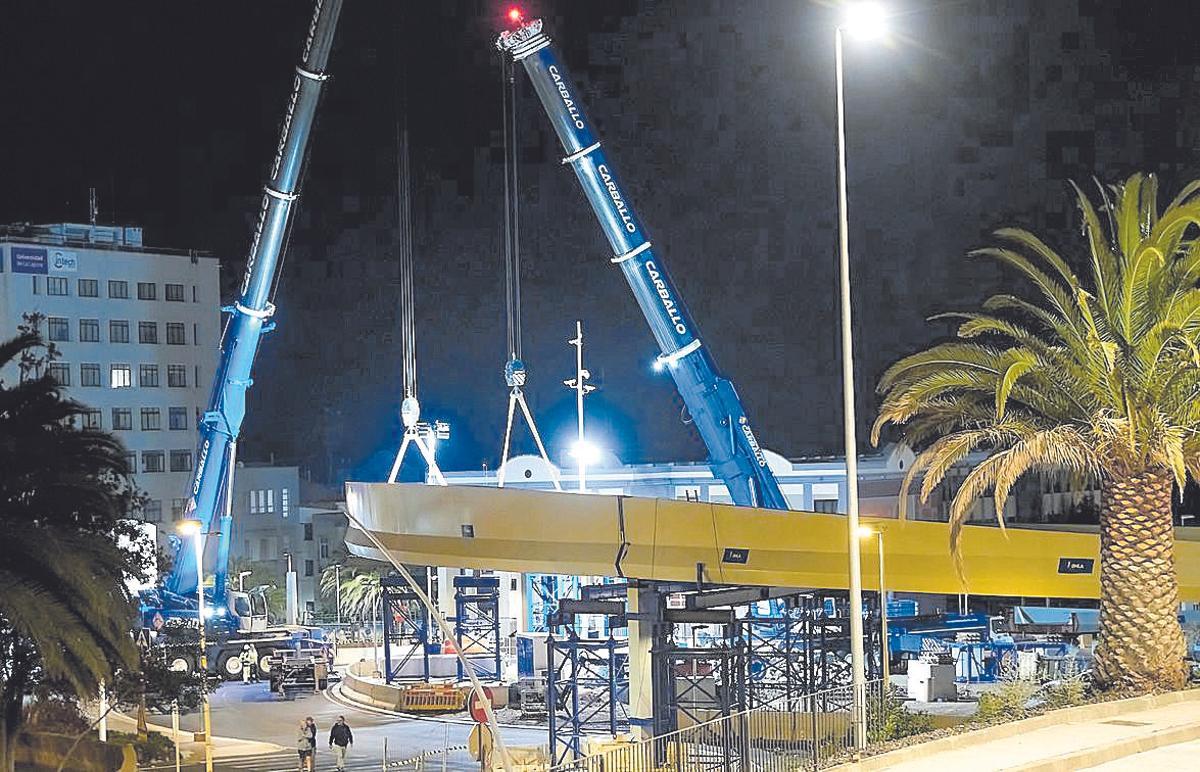
Construction of the large pedestrian ring of Anchieta. / The day
Rosa Dávila asserts that “TF-1 is the main artery of Tenerife, and its upkeep is essential to ensure smooth and safe mobility.” She notes, “This route experiences a very high volume of daily traffic, thus, its maintenance and ongoing improvements are vital to prevent traffic congestion, decrease accident rates, and ensure that it remains a reliable communication link fostering the development of an economic hub and generating significant employment in the southern region of the island.”
Surface rehabilitation
Moreover, in January 2025 alone, the Cabildo allocated 6 million euros for the upgrade of the island’s roads, with various interventions centred on enhancing the surface, reinforcing road safety, and modernising crucial infrastructure. These investments aim to ensure efficient and secure mobility for both residents and visitors in Tenerife.
Among the initial actions of 2025, the Cabildo has also sanctioned several rehabilitation projects, including improvements on the TF-28 between the sentry and Camella in the municipality of Arona, involving an investment of 1.6 million euros, and the rehabilitation of the surface on the TF-334, linking Los Realejos, San Juan de la Rambla, and La Guancha, with a budget of 1.3 million euros, along with the renewal of the TF-215 which connects Sauzal with La Matanza, at a cost of 1.2 million euros.
This commitment is strong; also kicking off the new year, the road department has initiated the tender for the drafting of eight projects focusing on road improvement and conditioning on the island, with an investment of 1.2 million euros.
These enhancements aim to bolster safety for both vehicle and pedestrian traffic. The projects encompass improvements on the TF-272 from Barranco Grande to La Esperanza, the TF-82 linking Santiago del Teide to Tamaimo, the TF-42 in Garachico, Los Silos and Buenavista, along with the TF-134 in the Roque area of Las Bodegas in Santa Cruz de
Tenerife’s Road Infrastructure Improvements
Tenerife, featuring the old TF-13 at the Agua de Dios Barranco in La Laguna, the pedestrian walkway on the TF-29, and the TF-265 route towards Llano del Moro.
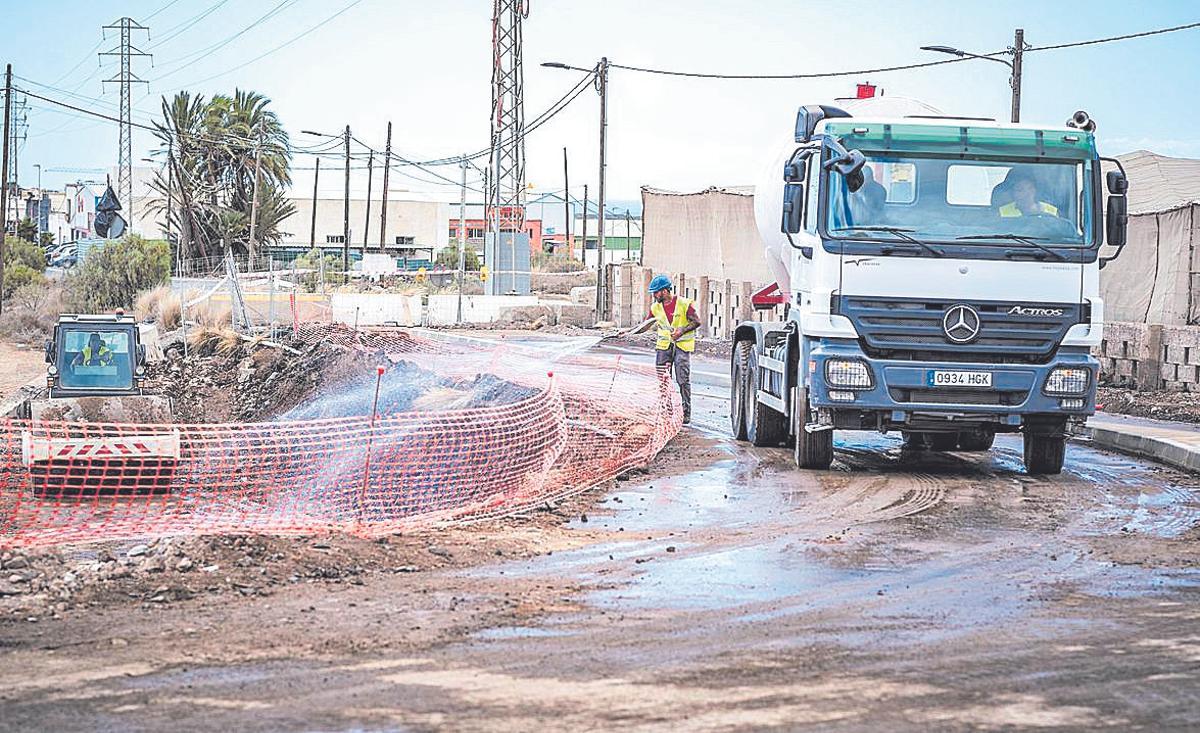
Enhancements to the asphalt. / The day
Simultaneously, the Cabildo has compiled a total of 38 road enhancement projects with an investment surpassing 700,000 euros. This includes resurfacing, drainage enhancements, road signage, lighting, and slope stabilisation across various routes of significance on the island. These initiatives form part of the Cabildo de Tenerife’s commitment to modernising the island’s roadway infrastructure, ensuring safer roads that meet the community’s needs.
Strategic Initiatives
The Ortoteanda link, positioned on the TF-1 near San Miguel de Abona, has reached a pivotal stage with the opening of the right branch in November 2024, enabling its full operation and facilitating the transit of over 20,000 vehicles daily.
This long-awaited infrastructure signifies a breakthrough for southern Tenerife’s mobility, as it notably enhances the connection between Chafiras and Oroteanda, cutting travel time by 50% in one of the island’s most congested areas. Furthermore, the reconfiguration of access points and the addition of new branches has optimised traffic flows, minimising congestion and allowing for smoother, safer driving experiences.
Rosa Dávila, president of the Cabildo, has highlighted the significance of this initiative, stating, “With the Oroteanda link, we are addressing a long-standing demand from the southern region of the island.” “It is a vital infrastructure to alleviate congestion in one of the fastest-growing areas and enhance the quality of life for thousands who travel daily.”
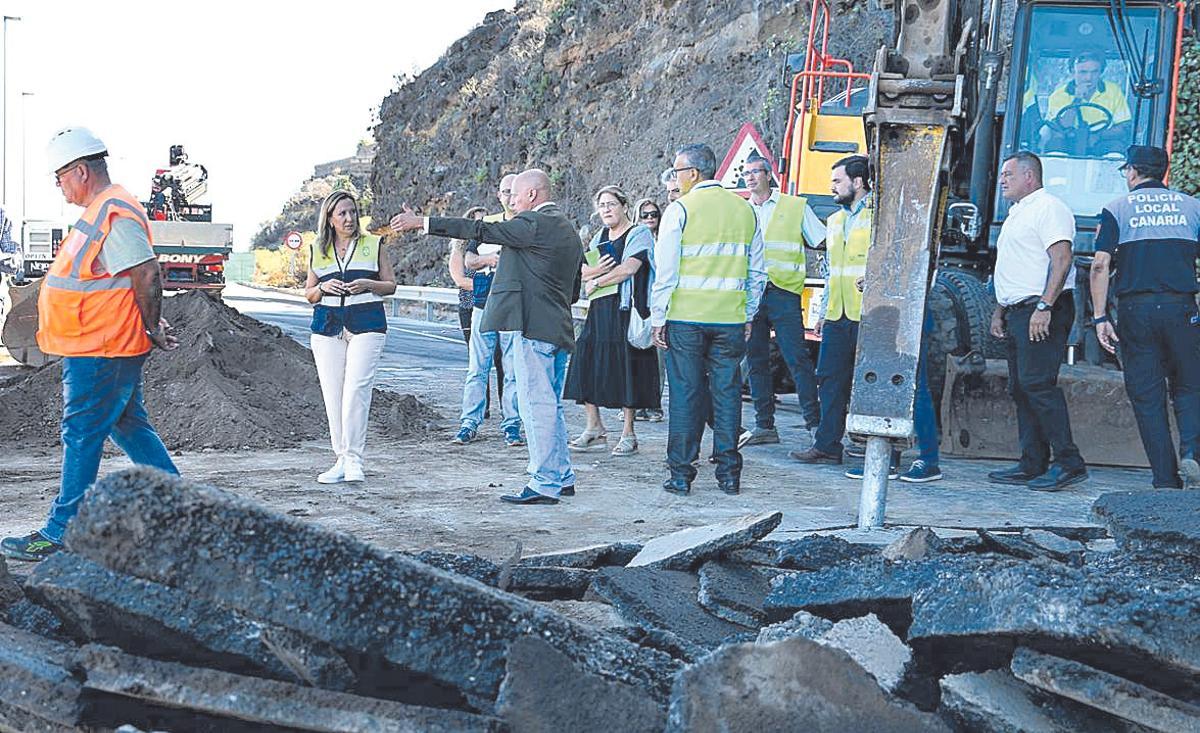
Dámaso Arteaga, Insular road advisor, alongside Rosa Dávila, president of the Cabildo de Tenerife, observing improvements on the Ronda road. / The day
On another note, the Erjos tunnel, regarded as one of the most ambitious infrastructure projects in the Canary Islands, is progressing towards its final construction phase, with the 5,095-metre drilling nearly completed. With a budget of 263 million euros, this tunnel will become the longest in the archipelago, facilitating the closure of the island ring and reinforcing the link between Tenerife’s north and south. Its opening is expected to significantly reduce travel times, particularly for journeys that currently rely on secondary and mountainous routes such as the TF-82.
Beyond enhancing island connectivity, the tunnel is anticipated to bring substantial benefits in sustainability and road safety, as it will diminish traffic on roads with steep slopes and challenging conditions, where adverse weather has regularly posed risks. Rosa Dávila has underscored the significance of this endeavour, asserting that “the Erjos tunnel will mark a turning point for mobility in Tenerife.” “Its introduction will allow citizens to save time in their daily commutes, improve regional connections, and foster the island’s economic and social growth,” concluded Dávila.











